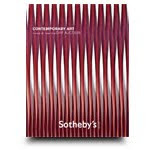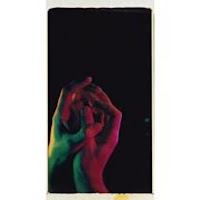Nine lots were withdrawn prior to the beginning of the sale, and so I have stripped them out of the analysis, as though they had never been offered. The revised summary statistics are below (all results include the buyer’s premium):
Total Lots: 473
Pre Sale Low Total Estimate: $6974800
Pre Sale High Total Estimate: $10661200
Total Lots Sold: 420
Total Lots Bought In: 53
Buy In %: 11.21%
Total Sale Proceeds: $12467622

Here is the breakdown (using the Low, Mid, and High definitions from the preview post,
here). As you can see, the sale was strong across all price points:
Low Total Lots: 288
Low Sold: 256
Low Bought In: 32
Buy In %: 11.11%
Total Low Estimate: $1930700
Total Low Sold: $2422372
Mid Total Lots: 158
Mid Sold: 138
Mid Bought In: 20
Buy In %: 12.66%
Total Mid Estimate: $3890000
Total Mid Sold: $4610250
High Total Lots: 27
High Sold: 26
High Bought In: 1
Buy In %: 3.70%
Total High Estimate: $4840500
Total High Sold: $5435000
.

The top photography lot by High estimate was tied between three lots, all by Ansel Adams: lot 94, Ansel Adams,
Moonrise, Hernandez, Mexico, 1941/1950s or 1960s, lot 97, Ansel Adams,
Winter Sunrise, Sierra Nevada, From Lone Pine, California, 1944/1950s or 1960s, and lot 100, Ansel Adams,
Clearing Winter Storm, Yosemite National Park, 1938/1950s or 1960s, each at $300000-500000. The top outcome of the sale was the
Clearing Winter Storm mural at $722500 (image at right, bottom, via
Sotheby's); the
Moonrise mural went for $518500 and the
Winter Sunrise mural brought in $482500.
Interestingly, only 67.62% of the lots that sold had proceeds in or above the estimate range, so there were clearly plenty of lesser known lots that didn't exactly fly off the shelves. Particularly for Adams, we may have seen the market struggle a bit to absorb all the work being offered. On the flip side, there were an astounding 77 "surprises" in this sale (defined as having proceeds of at least double the high estimate), with 35 of these bringing in more than
triple the high estimate. These explosive lots are listed below:
.
Lot 1, William Wegman, Avalanche, 1982, at $30000
Lot 2, Lucas Samaras, Untitled (Self-Portrait with Hands), 1990, at $56250
Lot 3, Chuck Close, 9 Part Self-Portrait, 1987, at $290500 (image at right, middle, via Sotheby's)
Lot 5, Robert Rauschenberg, Japanese Sky I (from the Bleachers series), 1988, at $242500
Lot 6, David Hockney, Imogen+Hermiane, Pembroke Studios, London, 30th July, 1982, at $194500
Lot 13, Robert Frank, New York, 1972, at $46875
Lot 24, Lucas Samaras, Ultra-Large (Hands), 1983, at $194500 (image at right, top, via Sotheby's)
Lot 25, Lucas Samaras, Ultra-Large (Self-Portrait), 1983, at $122500
Lot 29, David Levinthal, Selected studies from Modern Romance, 1983-1985, at $23750
Lot 31, Lucas Samaras, Panorama, 1983-1986, at $62500
Lot 33, Robert Heinecken, Lessons in Posing Subjects, 1981-1982, at $98500
Lot 49, Andy Warhol, Bianca Jagger, 1979, at $25000
Lot 51, Andy Warhol, Farrah Fawcett, 1979, at $43750
Lot 52, Andy Warhol, Self-Portrait (Grimace), 1979, at $146500
Lot 53, Andy Warhol, Self-Portrait (Eyes Closed), 1979, at $254500
Lot 76, Imogen Cunningham, Unmade Bed, 1957/1960, at $146500
Lot 78, Minor White, Barns (Two Barns, Dansville, New York), 1954/1957, at $53125
Lot 83, William Garnett, Plowed Field, Arvin, Calif (Vertical Aerial 500 ft.), 1952/1957, at $50000
Lot 84, William Garnett, Nude Dune, Death Valley, Calif (Vertical Aerial about 500 ft.) (Sand Dune #1), 1953/1957, at $37500
Lot 115, Peter Beard, Selected Images, 1988/1993, at $31250
Lot 124, Lucas Samaras, Photo-Transformation, 1973, at $31250
Lot 130, Robert Mapplethorpe, Untitled (Spanish Woman), early 1970s, $12500
Lot 134, Joyce Tenneson, Suzanne (In Chair), 1986, at $28125
Lot 141, David Levinthal, Selected images from American Beauties, 1989, at $16250
Lot 173, Lucas Samaras, Selected Still Life Studies, 1978-1979, at $31250
Lot 177, David Levinthal, Selected images from Wild West, 1986-1987, at $17500
Lot 185, David Levinthal, Selected images from American Beauties, 1989-1990, at $34375
Lot 195, Robert Rauschenberg, North Carolina (from the Bleachers series), 1991, at $116500
Lot 210, Luigi Ghirri, From Still Life (3-D Glasses), 1980, at $34375
Lot 292, Various Photographers, Selected Portraits of Ansel Adams, 1960s, at $20000
Lot 336, Ansel Adams, Aspens, Northern New Mexico, 1958, at $46875
Lot 366, Laura Gilpin, The Rio Grande Yields its Surplus to the Sea, 1947/1957, at $28125
Lot 390, Minor White, Peeled Paint, Rochester, New York, 1959, at $43750
Lot 457, Walker Evans, Junked Cars, Connecticut, 1973-1974, at $6875
Lot 485, Ansel Adams, Sentinel Rock, Yosemite, 1981, at $31250
Complete lot by lot results can be found
here.
 According to an article by Erica Orden in yesterday's Wall Street Journal (here), it's been a great year for attendance at the MoMA. Buried in the chart at right (via the WSJ website), you'll see that the Henri Cartier-Bresson retrospective brought in a total of 412379 visitors. It was the only show of photography to make the short list.
According to an article by Erica Orden in yesterday's Wall Street Journal (here), it's been a great year for attendance at the MoMA. Buried in the chart at right (via the WSJ website), you'll see that the Henri Cartier-Bresson retrospective brought in a total of 412379 visitors. It was the only show of photography to make the short list.







































